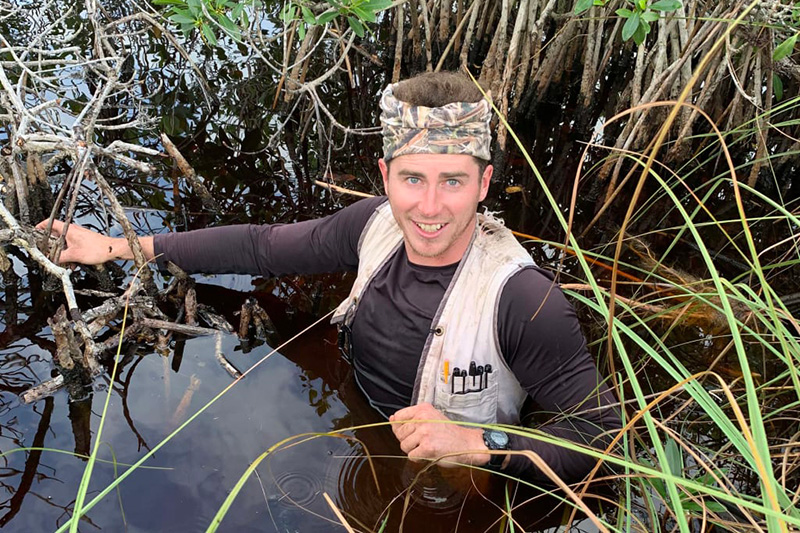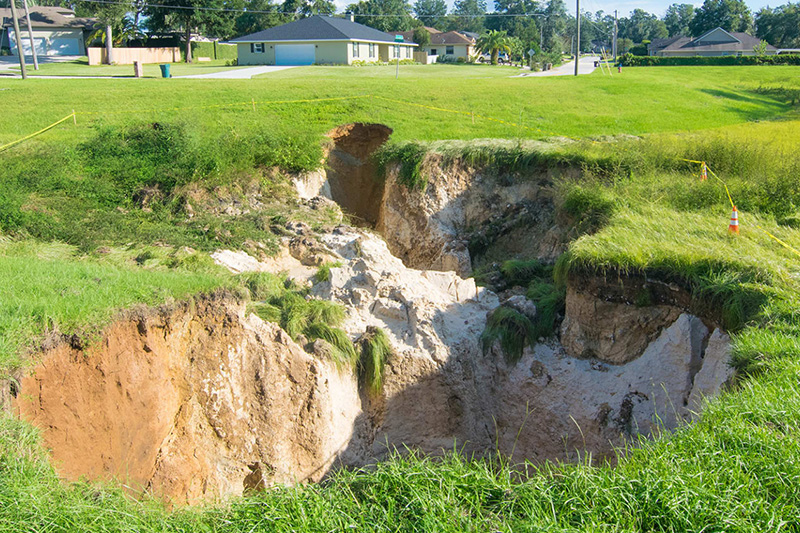Target 15.3 Restore land and soil
By 2030, combat desertification, restore degraded land and soil, including land affected by desertification, drought and floods, and strive to achieve a land degradation-neutral world

Peat Collapse
Peat soil is the building block of the Florida Everglades, and it is in trouble. Peat soil collapse can trigger a vicious cycle of more severe storm surge, saltwater intrusion and decreased water quality. This could also mean the release of large amounts of carbon. FIU scientists are investigating the impacts of peat collapse, strategies for mitigating these impacts and strategies for stopping further collapse. Their research shows a loss in land elevation due to peat collapse in the Everglades, an area already at-risk to rising sea levels. But they’ve also identified a potential solution to intervene — improved delivery of freshwater to the Everglades to combat increased salinity. The researchers are also collecting data to identify and detect areas vulnerable to future collapse and inform management strategies.

Land Subsidence
Our researchers are studying an urgent concern facing coastal communities across the globe — land subsidence and sea level rise. This is a naturally occurring, very slow movement of the ground that happens through the accumulation of sediment from mud or volcanoes, as well the vertical movement of the earth’s crust. Few studies have examined subsidence in relation to sea level rise, yet subsidence information is critical to making more accurate flooding predictions. With Miami being ground zero for sea level rise, FIU scientists are leading research to inform management and identify long-term solutions.

The Tundra Permafrost
Temperatures are increasing in the Arctic at more than double that of the global average. Shrubs are getting bigger. Plant populations are changing. Animals are changing their diets. We know this because scientists from every Arctic country in Europe, Asia and North America have been working together for 30 years, carrying out coordinated experiments to examine vegetation change across the tundra biome as part of the International Tundra Experiment (ITEX). FIU scientists serve as the lead for North America ITEX. These researchers know better than most what a warming planet looks like. Traditionally, plants in Arctic’s tundra region are low-lying and grow very slowly because of their very short growing season. But as temperatures warm, the growing season is beginning earlier. Some plants are moving into areas they did not occupy before, and species composition is changing. These changes have not been swift and easily could’ve gone unrecognized. But ITEX is doing what it was designed to do — documenting and providing understanding on the impacts of climate change to this vast, treeless region with its frozen subsoil. This research is informing the scientific community and policymakers about realized changes happening in the Arctic and what the world should expect for the future of the Arctic.